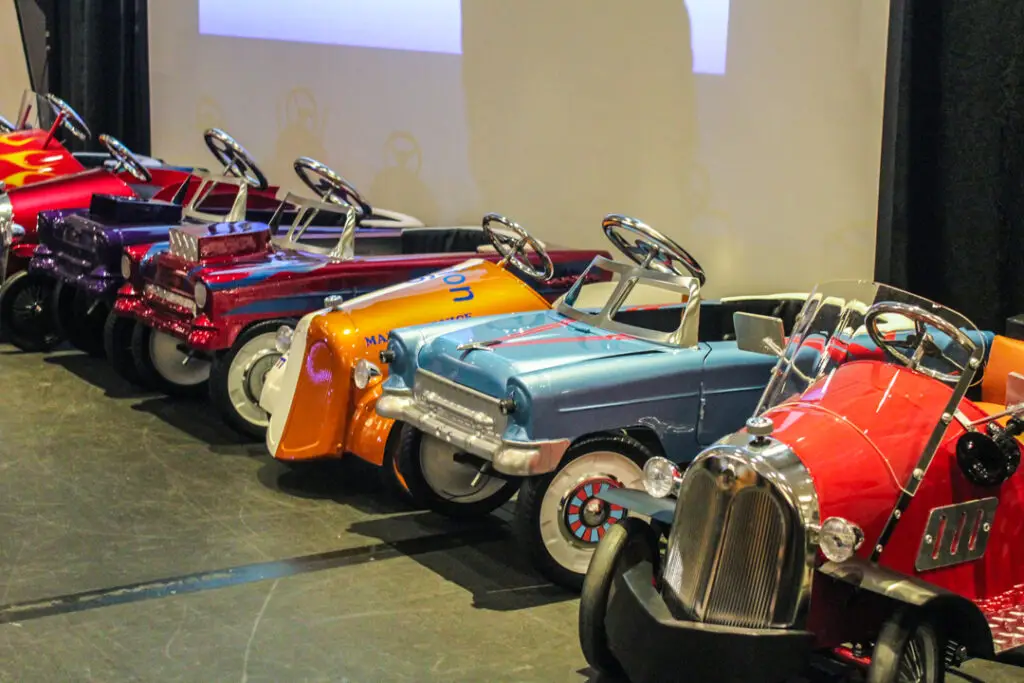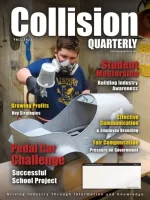In the Pedal Car Challenge, the Automotive Retailers Association (ARA) provided each participating school with a toy pedal car to design, modify, and paint, and the ARA’s industry partners (BASF, Color Compass Corporation, and Craftsman Collision) provided the students with materials, mentorship, and much, much more. This innovative event was the result of a partnership between the ARA and BASF through the ARA’s AutoCareersBC program.
" The success of the program was due to the passion that those people put into it."
To kick-off the program and inspire the schools, three teams of collision repair and restoration professionals initially took up the challenge of restoring three different pedal cars. The teams included 360 Collision Centres, P.J. Collision, and Rust Valley Restorers. It was their story that was featured in the summer edition of Collision Quarterly. In this article, we will focus on the teachers, mentors, and sponsors who become so passionately involved with the schools and students who participated.
Origins & Inspiration
The original inspiration for the Pedal Car Challenge came to ARA President and CEO Adrian Scovell while pondering the problem of how to attract youth into the automotive trades.
“I wanted to do something that would inspire kids to explore the trades and see what they are about. This was part of a student outreach program that we’ve got Dejla Sabanac [ARA industry relations advisor] dedicated to. So I thought, you know, I’ve got my hot rod, but I can’t really take it to all the schools. That’s not feasible.
“And then I happen to be watching a television show featuring a custom car shop, and the painter was painting a pedal car for an auction to raise money for a charity. And I thought, wow—that is really cool. He did a phenomenal job, and I thought to myself, what if we could just show kids that there is no difference between doing the metal and bodywork on a metal pedal car versus a full-sized car?
So that’s when we put the two things together. We could ask some professionals to paint and modify a metal pedal car, which would be an easy thing to do to show the kids and get them interested. Then we thought we could give schools their own pedal cars to work on. We could buy a couple of pedal car kits and give them to the schools and students and challenge them. That’s when we went to BASF and presented the idea, and they jumped in.
So we bought a dozen car kits, and we brought them into the schools and waited to see it if the idea would work, or if in fact the students would get inspired and want to work on them. And as it turns out, it really worked. Dejla did an unveiling at the ARA’s recent collision and glass event that was organized by David Ribeiro [ARA senior industry relations advisor], and the response was off the charts. We had five different companies approach us immediately after the event and say, ‘How do we get involved? How much money do you need? I love it.’ And they were so passionate.”
Partnership & Teamwork
For a project of this scope, finding the right industry partner is essential. Scovell was clear that the success of the program was largely due to BASF’s effort. “I would say we got lucky in that we found the perfect partner,” said Scovell. “Those individual people, Errol [Ritchey] and Tim [Brilz], they made it happen, and Dejla. Without them, this would have not worked.”
"It was great that the ARA had noticed that there was a void in opportunities for youth to get hands-on experience with this trade because unless you have access to cars, you don't really know what your passion might be.”
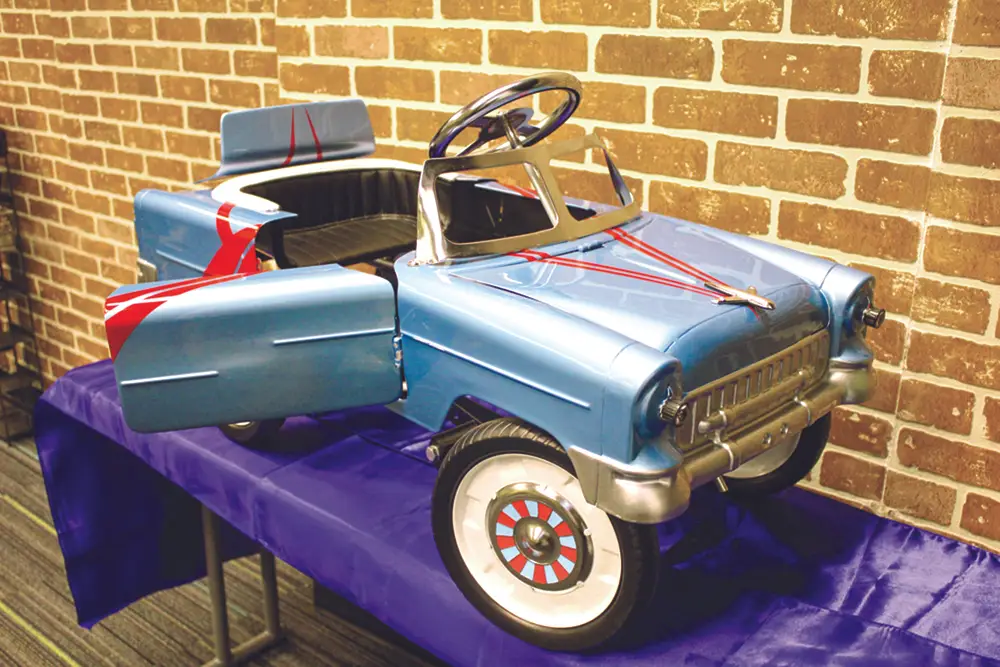
Now, who are Errol Ritchey and Tim Brilz, and why were they so critical to the success of this program? Ritchey is a business development analyst with Color Compass Corporation, and Brilz is a technical service representative with BASF. Sabanac was happy to explain:
“Errol and Tim helped the kids design and paint the vehicles and choose the colour scheme and so forth. They aided and assisted with the overall completion of the cars. Their assistance was vital to getting this project completed and getting the cars out on time and the kids having experienced the positive experience that they did.”
So how were Ritchey and Brilz persuaded to get involved with the Pedal Car Challenge? Ritchey described his recruitment:
“When Rick Haswell [president, Craftsman Collison] and my boss Mort Hall [vice president, Color Compass Corp.] asked if I would be willing to take on this project, I said yes. Obviously, we got involved because of the labour crunch. That’s the first thing that comes to mind, but we have always been a part of bursaries for high schools and BCIT [British Columbia Institute of Technology], and I’ve always been an instructor for music, martial arts, and painting, so helping with something like this is right in my wheelhouse. I like to teach, and I like to inspire, and I like art, and vehicles are that kind of project. They put together both art and technical know-how.”
It did not take much to persuade Brilz to get involved either: “When I was asked if I would be willing to do a project like this, right off the bat I said wow! That sounds really fun! I thought this would be a great opportunity, and that I would love to help in any way. I also thought it was great that the ARA had noticed that there was a void in opportunities for youth to get hands-on experience with this trade because unless you have access to cars, you don’t really know what your passion might be.
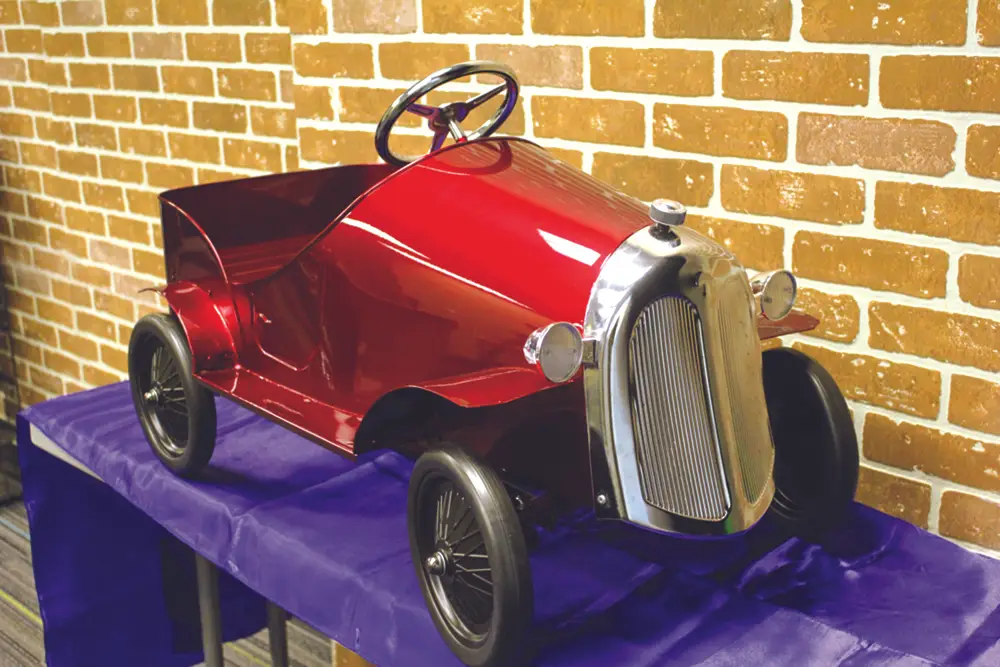
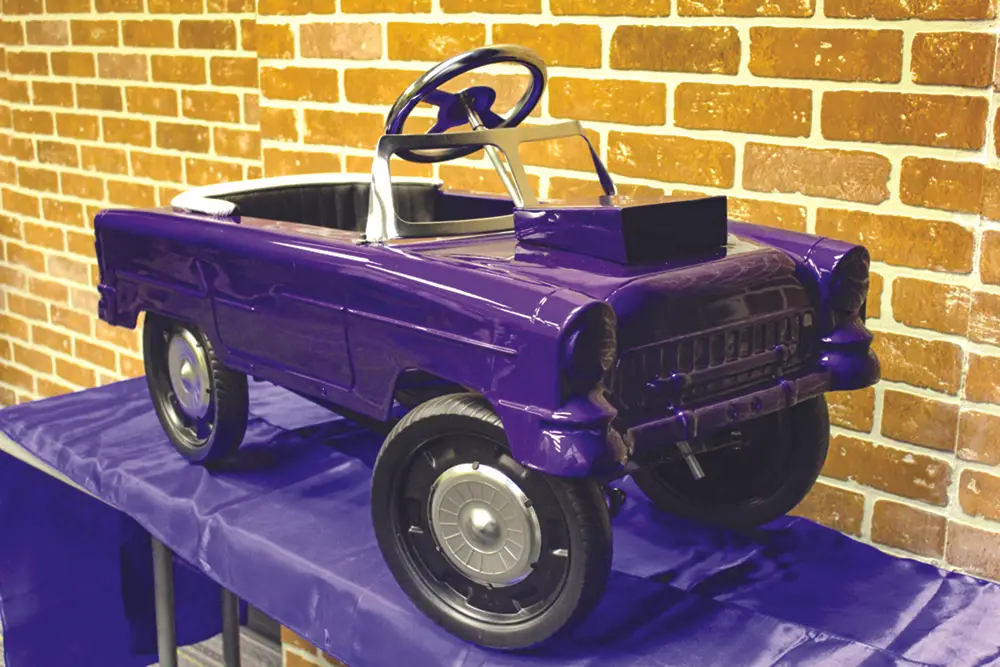
"As an industry, we have a responsibility to grow the next generation for our trade and to represent our trades in an accurate light for what it is today.”
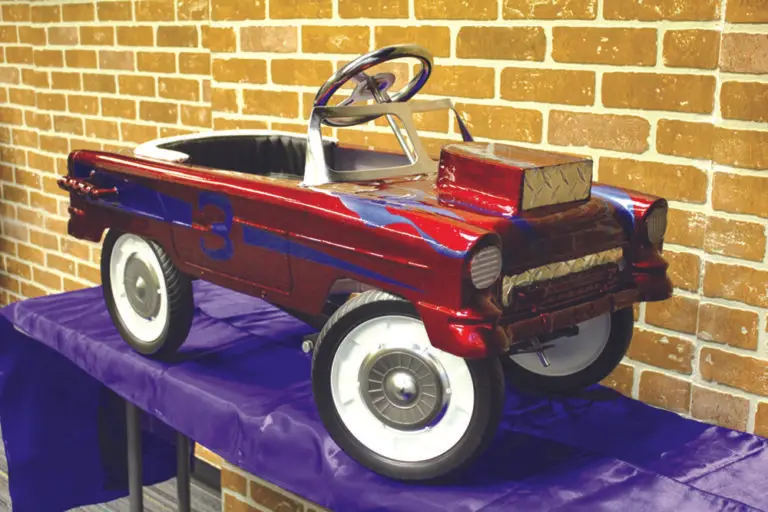
Brilz related an example from his own youth. “I never knew I wanted to be a painter,” said Brilz. “I never thought of it until I got into high school and then realized how fun it was to paint a car. Maybe your passion isn’t mechanical. It could be physically working in sculpting the body and fabricating something, or for me it was painting. So when the idea for this project came up, I thought this could be a great opportunity to find youth and maybe help them find an interest.”
It was Trista Anger, the regional business manager for BASF (Western Canada) that originally approached Tim about participating in the Pedal Car Challenge. When Collision Quarterly asked Trista why BASF partnered with the ARA for this project, this was her response:
“One of our platforms as a global organization is industry sustainability,” said Anger. “So when we see a project like this, and given the labour challenges that the collision industry is facing now and in the next five to 10 years, we realize that we need to engage students and get them excited about collision repair as a career. We really view this project as a stepping-stone to that. What better way than to get students excited early on, to get them hands-on with the materials, and to show them what bodywork might be like. We felt this project could be a great contributor to the sustainability of our industry, and in this case, the B.C. market specifically.
"Projects like this are critical to making sure that we can see a successful continuation of the collision repair industry.”
BASF also worked with Color Compass Corporation, its distributor, for the project. “There was a combination of materials,” said Anger, “but most importantly, and what has really come to light, and again in conjunction with Color Compass, was the time necessary for the project. We made ourselves present at the schools and worked with the students. It was fantastic.”
Anger had high praise for Brilz, whom she approached to be on the team. Brilz worked with students from three schools: Clearview Elementary & Junior Secondary School (Fort St. John), W.L. Seaton Secondary School (Vernon), and Brocklehurst Middle School (Kamloops).
“I think it is a fair statement to make that without Tim, this project would not have succeeded in central and northern B.C.,” said Anger. “He went up to Fort St. John and worked with one student there. He also spent two days in Kamloops working on the project there. He is extremely passionate about getting students in the industry, getting them excited and showing them the trade. He took incredible ownership for this project. So if you look at BASF and what we’ve given, it really is important to mention Tim’s time as a technical consultant and his training and work with the students.”
Trista also had high praise for Ritchey, who worked with the schools in the Lower Mainland and on the Island including Kenneth Gordon Maplewood School (North Vancouver), Frank Hurt Secondary School (Surrey), and Quamichan School (Duncan).
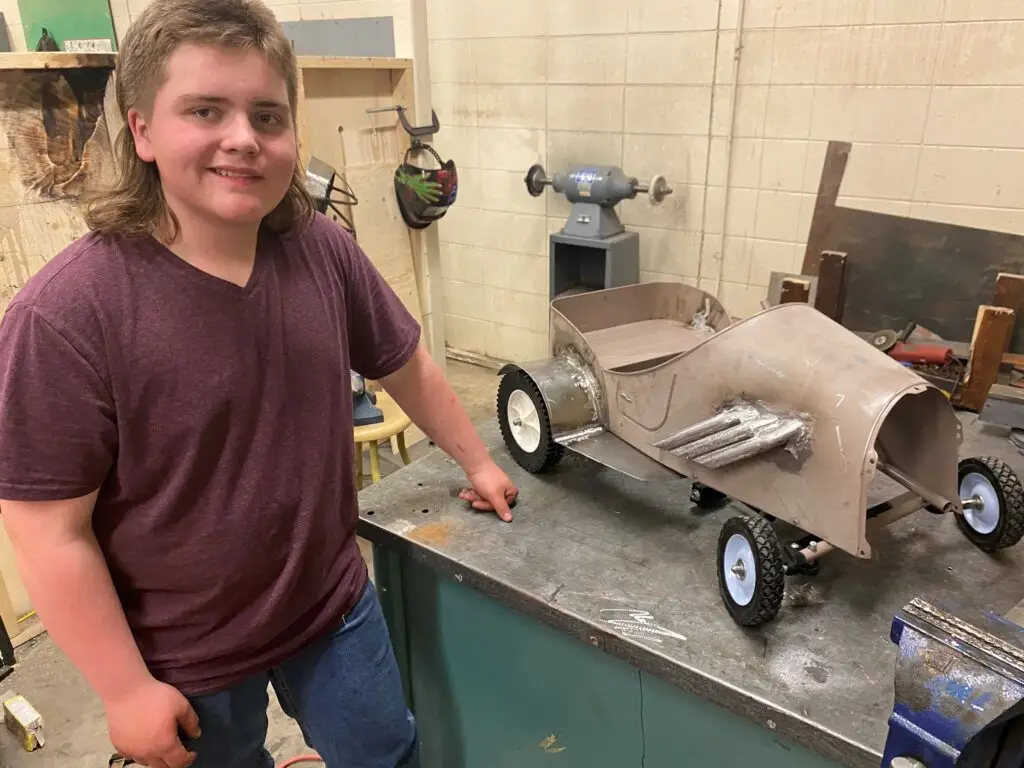
Ritchey worked especially close with staff members from Craftsman Collision to help the students complete their cars. Craftsman Collision, another industry partner, played a critical role. The company let the students and their mentors use their shop space for painting and putting the cars together, which was essential, because many schools did not have the resources.
“So the schools in the Lower Mainland that I got the most involved with, they actually didn’t even have a metalwork class, so I ran back and forth to the North Vancouver Craftsman a lot,” said Ritchey. “A body man, Zoltan, was extremely happy to help out. He spent a lot of time on their car. The manager, Dave, he was also extremely supportive and very happy to help.
“We had two field trips to the shop so the students could see the shop and talk to the body man because they had ideas about the car. So they would say, ‘We want to do this, this, and this,’ and we would shoot some ideas around about whatever their challenge was.
“One of the teachers was also extremely hands-on,” said Ritchey. “Her name was Ashley. So she dropped the car off once, and I dropped the car off another time.”
Originally, Ritchey and Brilz were just supposed to be mentor tech reps, but as time went on, they ended up doing much, much more, assisting with the technical side of painting, body work, and more.
“Basically, we did our best to make the students’ ideas a reality,” said Ritchey. “Like what would it take to make their ideas real? They were actually quite realistic about it. They just had a car and wanted to do cool things with it, so I would point them in a direction where the school had resources. Kenneth Gordon, for instance, they did not have a metal class, but they had an electrical class. So the students put in lights, and they even wanted to hook up an iPhone to the car so they could play music.
“The school in Surrey was different. I did a lot of technical stuff, but their instructor was extremely hands-on, and they had a very good metal class, so they kind of did everything on their own. I just supplied paint, and then I quickly painted it for them because we couldn’t paint it there.”
Learning & Impact
There is little question that participating in the Pedal Car Challenge had a tremendous impact on the kids who participated. You can learn more about the student experience in Iva Kestrankova’s interview in the Collision Quarterly 2022 Fall issue (Learning the Process: Haden and Dominic on Metal Work, page 22), and in Brilz’s personal account (Mentors Matter, page 24).
The students who presented their vehicles at the ARA’s Collision/Glass AGM & Trade Show last June made a great impression. “They were definitely engaged,” said Scovell. “They all said that they were inspired by this project. It showed them what they’re capable of doing, and that’s a really big part of it.”
When asked if he would participate again, Ritchey’s answer was clear: “Yes! 100%! I just like the involvement. I like going into the schools and creating that kind of inspiration and seeing what comes out of it. I guess I get that from my musician background—you know, just seeing what can be created by interactions.”
Brilz expressed hope that the ARA would continue the Pedal Car Challenge. “I think this first year was an awesome opportunity for us to learn. And going forward, it’s going to get better, and I am so interested and excited for next year. I hope that they asked me to be involved again. I hear they have more pedal cars lined-up!”
As Scovell said, “The success of the program was due to the passion that those people put into it.”
However successful, there was also a learning curve involved, and the project proved to be more labour intensive than anticipated. As Scovell said, “One of the learnings from the program is that we have to carefully qualify which schools we bring in and make sure that we’re clear about what needs to be done.
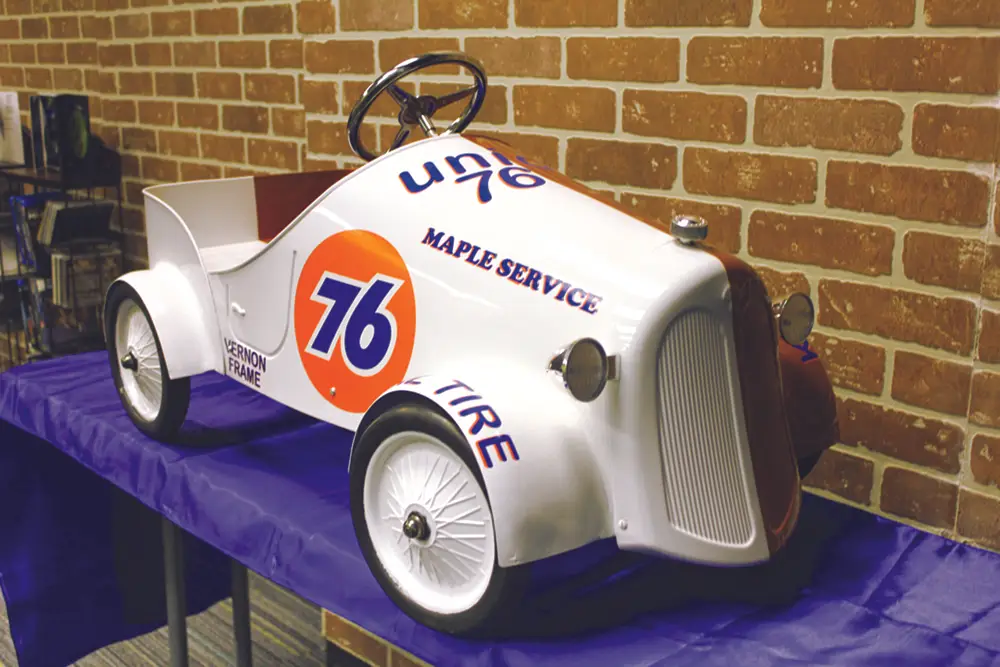
"Key to the success of this program is industry engagement, and the Pedal Car Challenge really needs shops that can work with the program.”
“You need three things. You need an inspiring and engaged teacher. You need the right students, and you also need the local support of a collision shop. The students need to be able to take their car to a collision shop so they can spray it using professional equipment. This time, it was primarily Craftsman Collision. Where the right factors were in place, where the students had an inspired teacher, the results were outstanding.”
The Future
So what about Brilz’s question? Will there be another Pedal Car Challenge in the future? According to Scovell, the answer is yes.
“The long-term plans are to make it into a Canada-wide challenge. We will bring it across the country and engage other provinces, and then we’ll make it a challenge where the kids enter their car and there will be online voting and prizes. Ultimately, I’d like to see it go international.
“We could easily and quickly put a few dozen pedal cars into the project, but we’re not going to do that. We’re going to make sure that we only put the cars where we’ve got the right teachers and where we’ve got the ability to properly support the program.”
BASF also seems eager to continue its support. “As an industry, we have a responsibility to grow the next generation for our trade and to represent our trades in an accurate light for what it is today. Projects like this are critical to making sure that we can see a successful continuation of the collision repair industry,” said Anger.
Ready for a Challenge?
Key to the success of this program is industry engagement, and the Pedal Car Challenge really needs shops that can work with the program. Are you willing to let these kids into your shop and help? If you are a collision shop owner and would like to become involved, please contact ARA Industry Relations Advisor Dejla Sabanac at (604) 432-7987 ext. 227, or email her at DejlaSabanac@ara.bc.ca.
Finally, people who have been following the Pedal Car Challenge may wonder where this year’s vehicles will ultimately end up. This year, these cars, along with the ones completed by the professionals last spring, will be auctioned off at the ARA’s 70th Anniversary Celebration and Annual General Meeting (AGM) in Whistler, September 30–October 1, 2022. The auction will help raise funds for the Automotive Retailers Foundation Inc. (ARFI), a program that offers scholarships and bursaries to individuals pursuing a career in the automotive industry. Contact Dejla Sabanac at the ARA for more details.

